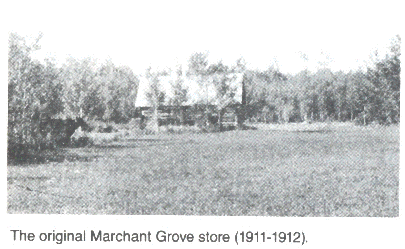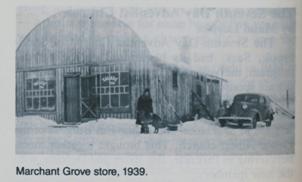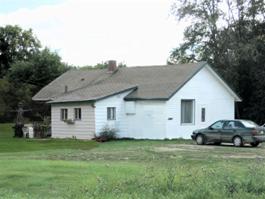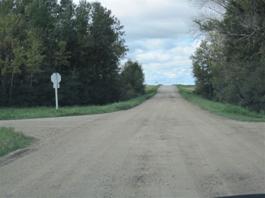



THE MARCHANT GROVE QUILT
A CANADIAN RED CROSS QUILT
Version 6.01
03 March 2021
David March © 2014
Marchant Grove was not a collection of houses in a village as such, boasting little more than a small post office and store with gasoline pumps. The community was comprised of farming families generally meeting in each other’s homes. The opening of a new highway, bypassing the community, led to the demise of the store and the nearby school, so little evidence of its existence remains today.
Marchant Grove was named after the Marchant family who came to Saskatchewan in the early 1900’s. Originally from England in the late 1800’s, the family lived in Manitoba, first in Winnipeg and later in Woodlands. H Arthur Marchant was born July 11th 1887 in Winnipeg. In 1909, he came on a hunting trip to view the countryside in what became Marchant Grove. The records show that he filed a claim on December 24th 1910. Returning in 1911, he took his homestead on NE quarter of 31-50-3 W3.
The post office and store, under various owners, served the rural community well until two factors around 1970 saw the end. Rural post offices were being closed down in favour of mail boxes, and the new road bypassed Marchant Grove. The last store owners sold up, the building became a private residence and the community ceased to exist except in memories, and the name of the Ladies Aid.
The Ladies Aid committee having started in Marchant Grove kept its name. It was formed in conjunction with the Marchant Grove United Church, founded in 1925, with services held in the school. A church building was erected in 1937, used until 1964, then only occasionally until it was sold to the Seventh Day Adventists in 1975.
Marchant Grove in 2010
Marchant Grove was a very small rural community on the old highway to Canwood and beyond, about ten miles north of Shellbrook, Saskatchewan. It is almost as centrally placed in Saskatchewan as it is possible to be. The vast prairie lands are to the south, and to the north are the wooded areas and lakes. It lies in an area that was settled from the late 1800’s onward, much of the land being taken by war veterans. After the Boer War ended, veterans could either take a cash award or 320 acres of land, to farm themselves or to sell on. In 1917, an act was passed under the Soldier Settlement Board to assist in the settlement of land for agriculture. A veteran who met certain criteria could have land under certain stringent conditions. Much of the land surrounding Marchant Grove was settled in this way. Until then, it had been virgin land. Most of the men and women on the quilt are the children of original settlers, people who first broke the land and cultivated it. Although the land is fertile, the climatic conditions are harsh. Being in the middle of the continent, temperatures are extreme, with a range of 80 degrees Celsius from summer to winter. Average summer temperatures reach 40 degrees, in winter it plunges to –40 degrees and below.
MARCHANT GROVE
His parents joined him in 1911. It was they who started the store and post office in 1912, though Arthur was the first postmaster, aided by his sister Katherine. It was located at the SE corner of the NE quarter of Section 30. (Homestead Entries as recorded in the Township Registers at Lands Branch, Regina township 50, Range 3, west of Third).) All goods had to be shipped in by ox cart in those days. When it came to naming the post office, many settlers preferred the name Rayside following the name of the school, but they were overruled by Ottawa and the post office was named Marchant Grove after the postmaster.
Photo from Our Harvest of Memories

A garage and gas station were added later to the small community, but these no longer exist. The early settlers had high hopes of developing a large community, a premise founded on the belief that the Grand Trunk and Canadian Pacific Railway would pass close to the township. However, when it was built, it missed Marchant Grove completely. When the main road was built in the early 1930’s, it was ten miles to the north, so Theodore (Ted) Odegaard relocated the store and that became the new location of Marchant Grove.

Photo from Our Harvest of Memories
The store building, now a private house


Looking away from the house
On February 9th 1916, Arthur married Helen (Nellie) Gray, originally from Glasgow, Scotland at Shellbrook. They had two daughters, Georgia, born December 20th 1917, and Lilian, born May 30th 1919. Georgia married Edwin Anderson, whose name appears on the quilt.